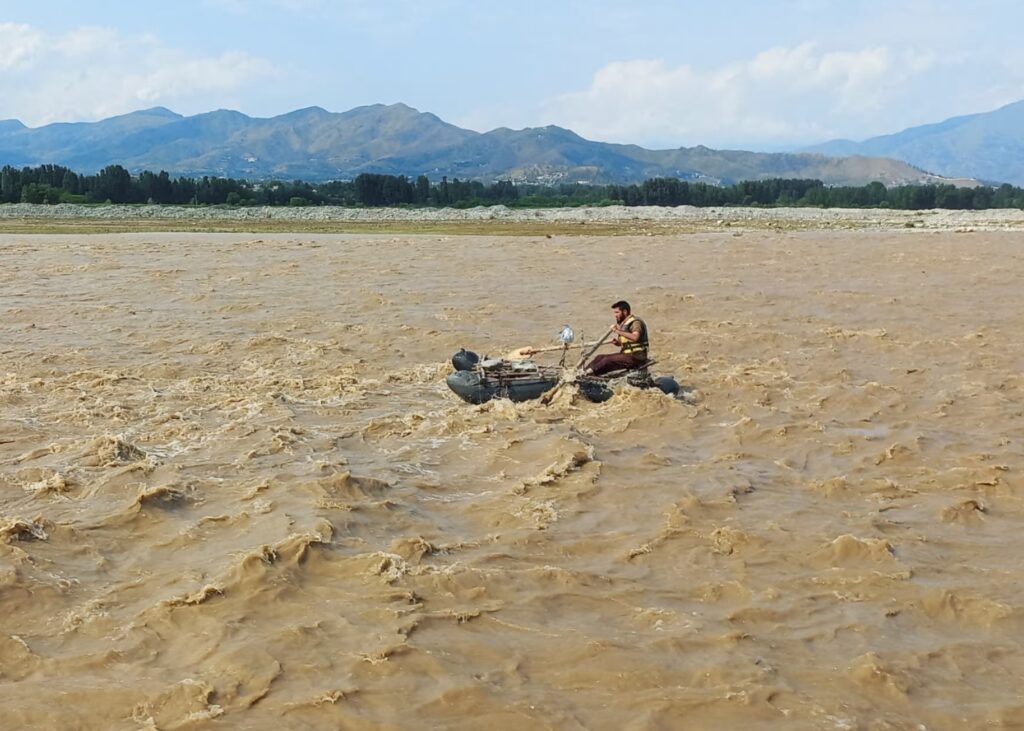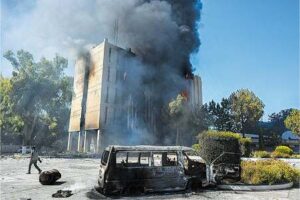PESHAWAR – They came for the cool air, the green hills, the beauty of the north. A family of tourists, smiling in photos just hours before the water swallowed them whole. The river didn’t care for vacation plans. It roared without warning, dragging an entire family into its muddy grip—before the monsoon had even officially begun.
This year, the rains arrived early in Khyber Pakhtunkhwa—and they came angry.
It was supposed to be the prelude to monsoon season. Instead, it turned into a deadly flood event. One that exposed the fragility of disaster response, the emptiness of post-tragedy statements, and the rising threat that looms over a region rapidly losing control of its seasons. Official reports on the drowning remain incomplete. Concrete action? Still pending.
Monsoon season, the lifeline of South Asia, brings with it 70 to 80 percent of the region’s annual rainfall. In India, it begins in early June. In Pakistan, it arrives by the end of the month and stays through September. These rains are essential—for agriculture, for food security, for the survival of millions of farmers. But that lifeline is now a loaded weapon.
South Asia is heating up fast. Weather patterns are becoming erratic. And while scientists don’t yet fully grasp how global warming is rewiring the ancient rhythm of the monsoon, one truth is increasingly clear: This system is breaking—and Pakistan is standing directly in the storm’s path.
‘It Flooded Before We Even Called It Monsoon’
Pakistan ranks among the most climate-vulnerable nations on Earth. With 240 million people squeezed between mountains, deserts, and floodplains, the country is now enduring extreme weather events more frequently and with greater intensity.
The 2022 monsoon floods were apocalyptic. A third of the nation submerged. Over 1,700 dead. Entire communities washed away. In many areas, the mud hasn’t dried, and the wounds haven’t healed.
A study published in the journal Nature examined the catastrophe in brutal detail, calling it a sign of what’s to come. It highlighted how heavy urban rainfall, overflowing rivers, melting snow in the north, and unchecked human development had all collided to produce a perfect storm.
The warning was stark: expect more floods. Bigger ones. Sooner.
Man Vs Nature—And Nature Is Pushing Back
Pakistan’s climate story isn’t just about rain. It’s about reckless human choices.
Deforestation. Construction on natural floodplains. Thickening air choked with dust, carbon, and smoke. Unplanned urban sprawl replacing wetlands and forests. Pollution. Overpopulation. And above all, denial.
We build over rivers. We slice through hills. We erase the habitats of other species, and then wonder why nature strikes back. From unregulated housing schemes to smog-filled cities, our actions are crafting the very disasters that drown us.
Ironically, Pakistan contributes almost nothing to global carbon emissions. And yet, it suffers the most. The climate finance promised by wealthier nations? Still stuck in headlines. Still not reaching the people standing in waist-high water.
Scientific Warnings Aren’t Distant—They’re Now
If the world continues to emit greenhouse gases at current levels, the risk is terrifying. Experts forecast a 58 percent increase in extreme rainfall in southern Pakistan, with five-day totals crossing 400mm. Single-day maximum rainfall (RX1day) may spike by 44 percent. That’s more than enough to wipe out fragile communities.
Adaptation is no longer a choice—it’s a countdown. Pakistan must move now.
Drains, Rivers, And A Race Against Time
Experts insist on urgent adaptive steps:
- Restore natural floodplains.
- Improve drainage infrastructure in cities and villages.
- Ban riverside development.
- Strengthen disaster planning.
No, Pakistan alone can’t stop global heating. But it can protect its people through smarter land use, emission controls, and resilient urban planning. A well-maintained drainage system might seem boring—until it saves a city from vanishing.
This is not weather. This is warning.
Climate Change and Monsoon Floods in Pakistan are no longer future concerns, they are present-day emergencies. And they will only grow more dangerous with every year of inaction.
Time is not running out. It’s already gone. The next flood is not an “if.” It’s a “when.”
And the water doesn’t knock. It breaks the door down.












